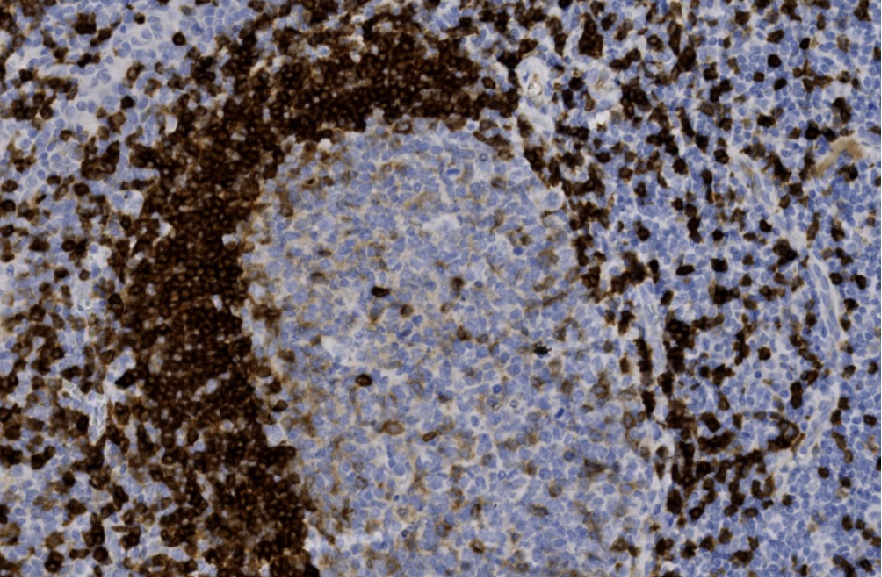 |
Immunoglobulin monomers (Igs) are composed of two identical heavy chains and two identical light chains. Variations in the Fc region of the heavy chains distinguishes five different classes of Igs (IgA, IgD, IgE, IgG, and IgM). Each of these classes can be expressed on the B-cell membrane, and more than one heavy chain class can be expressed by the same cell. In normal, healthy serum IgD is generally the fourth most abundant of the Ig classes. Igs are produced in mature B-cells and plasma cells, and the amount and type of Ig can vary in different stages of B-cell maturation: Igs in the earlier stages of maturation are present in the cytoplasm, whereas surface Igs are more characteristic of mature B-cells in the mantle zone. Plasma cells lose membranous expression of Igs, but accumulate them at a high level in the cytoplasm and can secrete them into the extracellular space. B-cell lymphomas and plasma cell myelomas often produce only one type of clonal Ig light chain.
Intended use
Anti-IgD antibody is useful for classifying B-cell lymphomas and plasma cell neoplasms when used with a panel of other antibodies.

Comments
0 comments
Please sign in to leave a comment.